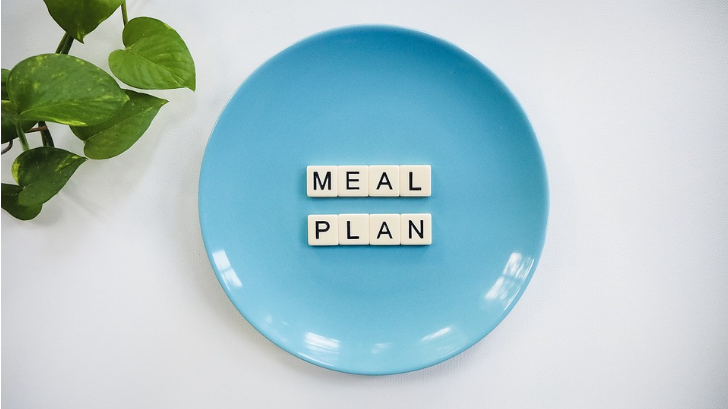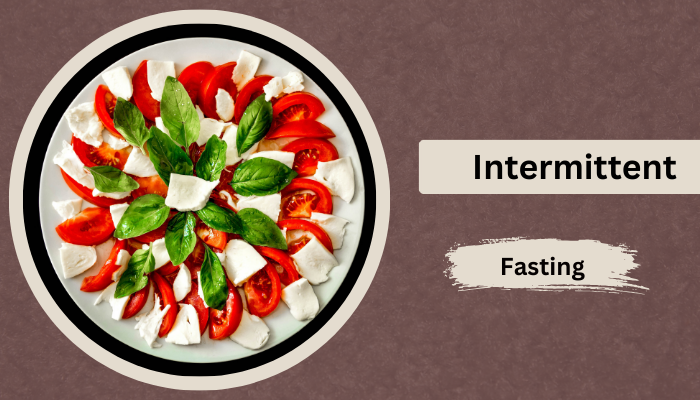Healthy Food Chart for a Daily Routine with Indian Meals Understanding the fact that healthy food chart for men and woman could be different for their daily use. Male Breakfast – 1 overnight oats with 1/2 cup of mixed berries and 1 tablespoon of honey. – 2 eggs (boiled or scrambled) with 2 slices of whole-grain toast. Or Poha with 2 boiled eggs. Lunch – Rice/roti – 1 cup of cooked dal (lentils). – 1 cup of mixed vegetable curry / Salad/ sprouts. – Grilled chicken or fish (any kind or protein). Snack – Low-fat Greek yogurt with of mixed nuts/ roasted fox nut. – Or any kind of fruits. Dinner – Whole-wheat chapati or roti besan ka chilla. – 1 cup of sautéed mixed vegetables (such as broccoli, bell peppers, and zucchini). – 1 cup of grilled salmon or tofu (or any sort of protein). Hydration – Drink at least 8 cups of water throughout the day. Female Breakfast – Oatmeal or overnight oats with mixed berries and honey. You can also use seeds and nuts. – 1 boiled egg with 1 slice of whole-grain toast. Or -Besan chilla with paneer burji and a salad. Lunch – 3/4 cup of steamed basmati rice. – 3/4 cup of cooked dal (lentils). – 3/4 cup of mixed vegetable curry (such as cauliflower, spinach, and carrots). – 1/2 cup of grilled chicken or fish. Snack – 1/2 cup of low-fat Greek yogurt with 2 tablespoons of mixed nuts. – 1 medium-sized banana. Dinner – 1 whole-wheat chapati or roti. – 3/4 cup of sautéed mixed vegetables (such as broccoli, bell peppers, and zucchini). – 3/4 cup of grilled tofu or paneer (or any sort of protein). Hydration – Drink at least 6 cups of water throughout the day. Understanding necessities of healthy food chart Eating a healthy food and a balanced diet is essential for maintaining energy levels, preventing disease, and general well-being. For both men and women, the following healthy eating chart suggests a daily schedule that includes Indian meals to guarantee that vital nutrients are taken in the right amounts. The guidelines for men and women range significantly since each gender has different caloric and nutritional demands. Women often have lower calorie and nutritional requirements, whereas males typically need more to maintain their bigger bodies and higher metabolisms. Muesli is a complex carbohydrate that is high in fiber and gives you energy all day long. It is a breakfast option for both men and women. High-quality protein is provided by the eggs, while natural sweetness and antioxidants are added by the berries and honey. Lunch consists of a combination of lean protein (fish or chicken for males, or tofu/paneer for women), whole grains (like basmati rice), legumes (like dal), and a variety of vegetables. This well-rounded strategy guarantees that complex carbs, fiber, protein, and vital vitamins and minerals are consumed. Fresh fruit and Greek yogurt with almonds are two examples of healthy and filling snacks that can help you avoid overindulging during the next meal and keep your energy levels stable in between meals. Dinner options consist of a selection of sautéed veggies, whole-grain chapati or roti, and a protein source (grilled salmon or tofu/paneer). This meal plan encourages consumption of fiber, vital micro-nutrients, and macro-nutrients in a healthy and balanced manner. Maintaining optimal body functioning throughout the day requires staying hydrated, and the recommended water consumption for men and women differs based on gender. For men, it is 8 cups, while for women it is 6 cups. Conclusion In conclusion, the healthy food chart that is offered provides a basis for a wholesome and well-balanced daily schedule that includes Indian meals and addresses the specific requirements of both genders. You may maintain a healthy weight, lower your risk of chronic illnesses, and improve your general health by implementing these suggestions into your everyday routine. It’s crucial to remember that these are only suggestions; depending on personal circumstances like age, degree of exercise, and any dietary requirements or limitations, this healthy food chart could need to be modified. A customized nutrition plan that supports your unique health and wellness objectives can be developed with the assistance of a certified dietitian or other healthcare expert. Written By:- Amisha
Category: life style
5 health benefit of omega-3 on health
Omega-3 Fatty Acids It is one kind of polyunsaturated fat that is essential to preserving our general health and well being is omega-3 fatty acids. The reason certain nutrients are referred to be “essential” is that our bodies are unable to generate them naturally; instead, we must get them from our food or supplements. The advantages , the appropriate consumption, and the finest dietary sources to guarantee you are receiving enough of these vital nutrients are all covered in this article. The Benefits of Omega-3 Fatty Acids Omega-3 fatty acids have a wide range of health benefits that have been extensively studied and documented. Here are some of the key benefits: Heart Health Omega-3 fatty acids have been shown to have a positive impact on heart health. They can help lower triglyceride levels, reduce inflammation, and improve the function of the endothelium, which is the lining of the blood vessels. This can lead to a reduced risk of heart disease, stroke, and heart attack. Brain Health The growth and function of the brain depend on omega-3 fatty acids. They may help treat depression and other mental health issues, in addition to being crucial for preserving cognitive function and lowering the risk of dementia and Alzheimer’s disease. Inflammation Reduction They have potent anti-inflammatory properties, which can help reduce the risk of chronic diseases such as arthritis, autoimmune disorders, and certain types of cancer. Eye Health They are essential for the health of the eyes, and they may help reduce the risk of age-related macular degeneration, the leading cause of vision loss in older adults. Pregnancy and Child Development Omega-3 fatty acids are crucial for fetal development and growth, and they may also help reduce the risk of preterm birth and support the cognitive and visual development of infants and children. Recommended Intake and Food Sources The recommended intake of omega-3 fatty acids varies depending on age, gender, and health status. The general recommendation for adults is to consume between 1.1 and 1.6 grams of omega-3 fatty acids per day, with a focus on EPA (eicosapentaenoic acid) and DHA (docosahexaenoic acid). The best food sources of omega-3 fatty acids include: There are different ways of getting that omega 3 from your food. Some veg sources and some non-veg Fatty Fish Fatty fish, such as salmon, mackerel, sardines, and tuna, are some of the best sources of omega-3 fatty acids. Consuming these fish two to three times a week can help you meet your recommended intake. Nuts and Seeds Walnuts, flax seeds, chia seeds, and hemp seeds are all good sources of omega-3 fatty acids, particularly the ALA (alpha-linolenic acid) form. Plant Oils Certain plant-based oils, such as flax seed oil, canola oil, and walnut oil, are also rich in omega-3 fatty acids. The Importance of Omega-3 Fatty Acids They are essential for maintaining overall health and well-being, and their importance cannot be overstated. From heart health to brain function, inflammation reduction, and eye health, these nutrients play a vital role in our bodies. Given the numerous health benefits, it is important to ensure that you are getting enough of these nutrients in your diet. If you are unable to meet your recommended intake through diet alone, supplementation may be necessary. However, it is always best to consult with a healthcare professional before starting any new supplement regimen. Conclusion One doesn’t need to emphasize enough the importance this fatty acid as a constituent of a nutritious diet. Knowing the advantages of these vital nutrients, together with the ideal sources in your diet and suggested consumption, can help you make sure you are consuming enough omega-3 fatty acids to maintain your overall well-being and health. Written By:- Amisha
Intermittent fasting around the clock: 4 different type
Intermittent fasting Following a schedule that falls between your time of eating and your time of fasting is known as intermittent fasting. You may see several different kinds of intermittent fasting. So here are some of the of the most liked ones. 16/8 method: 16/8 is the most common method of intermittent fasting, followed by a lot of people eating for eight hours and fasting for 16 hours. But in the eight-hour window, you can only eat under the given calories. 5:2 method: In order to follow this diet, you must eat for five days of the week and fast for two consecutive days. In those two days, you can have 500 to 600 calories. 5:2 might be a lot harder to fall, but it is more successful in helping to lose weight. Eat-Stop-Eat Once or twice a week, this strategy entails a total 24-hour fast from eating. You may decide, for instance, to fast from supper the previous evening until dinner the next evening. The Warrior Diet: In order to follow this diet your restrict your eating for a period of 20 hours and eat like a warrior at dinner time. Benefits of Intermittent fasting Intermittent fasting can be done in different ways. Some people decide to fast for 12 to 14 hours, and some for 16 to 8 hours. Some people choose to alternate lengthy intervals of eating and fasting or go for a day or two in a week. Choose the window that suits your daily schedule. It is evident that there is a suggestion that intermittent fasting is more effective than calorie restriction. It is proven to be more successful for weight reduction. Because of fasting, the hormones that rule the metabolism and appetite become more balanced. Research has indicated that there might be some health advantages to intermittent fasting, such as: Weight loss Losing weight intermittently can be accomplished with success. Limiting your eating window makes you automatically eat less calories. Fasting has also been linked in certain studies to increased metabolism. Improved blood sugar control: Low blood sugar and high insulin sensitivity are two common benefits of intermittent fasting Reduced inflammation: Another serious risk factor in many people is chronic inflammation, on a whole another level body while fasting body tends to experience less inflammation. Improved brain health: In some studies it has been found that intermittent fasting has been linked to certain brain enhancing function and protection against neuro-degenerative illnesses including Parkinson’s and Alzheimer’s. Before beginning any new diet, it is important to see your doctor, especially if you have any underlying medical concerns. Some other rules to follow: Drink an ample amount of water; hydration is the key during fasting. Black coffee, water, green tea, etc. During the first few days you might see some negative effects like hunger, exhaustion or irritation. These symptoms might disappear eventually. There is no secret way for losing weight or becoming healthier than intermittent fasting. It is crucial to take it in addition to a balanced diet and frequent exercise. Conclusion In conclusion, it is an easy diet plan that can offer different medical advantages, including weight reduction. Other than that, it can develop glucose control, decreased irritation, and possibly improved cerebrum capability. While there are a few famous irregular fasting techniques, the one that works best for an individual depends on their own tendency and health status. It is required to talk with a medical care professional prior to beginning any new dietary routine, particularly in the event that you have any prior medical conditions. Intermittent fasting is followed with a decent eating routine and standard activities to accomplish ideal health results. With the right methodology, fasting can be a significant device in one’s general health venture. Written By:- Amisha




